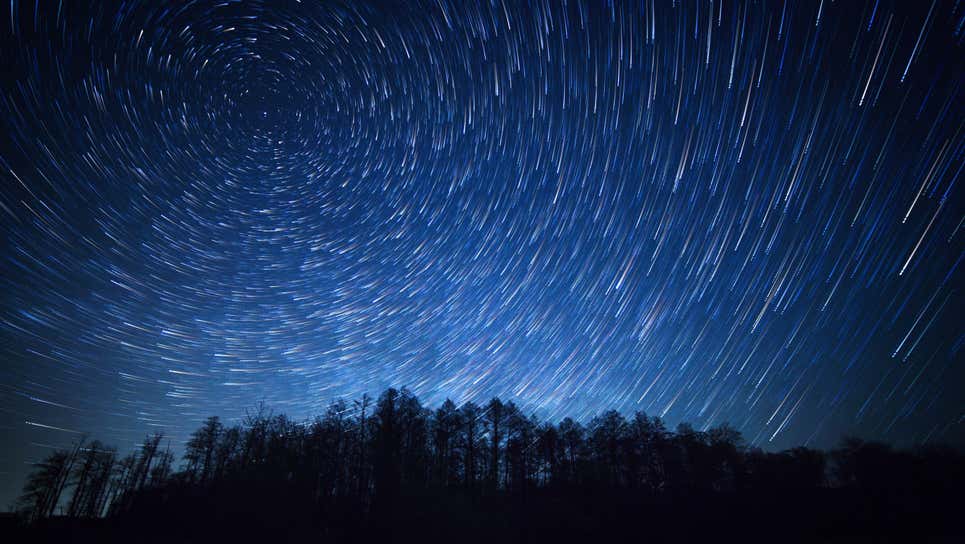A Bunch of Cool Events Are Happening in Space in August
Behold, wonders beyond your wildest imagination—or at least a few shooting stars.

Photo: sNike (Shutterstock)
There’s a lot going on in the night sky this month. I’m talking planets, meteors, asteroids, a supermoon, probably space aliens—it’s getting wild up there. Here are the celestial highlights of August 2022.
Early August: Shooting stars
August kicks off with a new moon, meaning the sky is darker so conditions are great for catching shooting stars. The annual appearance of the Pereids meteors peaks around the 11th, but that’s also when the moon is full, so you may have better luck earlier in the month with both the non-peak Pereids and the Southern Delta Aquariids meteors. The Southern Delta Aquariids peaks on Aug. 1. If you’re in the Northern hemisphere, look south for shooting stars.August 11: Supermoon and Saturn conjunction
On Aug. 11, the final supermoon of the year rises. A supermoon is what we call it when the moon is closest to the Earth, making it appear slightly brighter and bigger. August’s full moon is not only super, it’s also going to be accompanied by Saturn. At around midnight on the 11th, Saturn and the full moon will be in conjunction—they’ll look like they’re close together. You should be able to spot Saturn without a telescope or binoculars, although the brightness of the moon might interfere a bit.August 12: A disappointing meteor shower
The annual summertime appearance of the Perseids meteor shower is usually a highlight of the cosmic calendar, and this year it reaches its peak on Aug. 12. Usually, you can see a ton of shooting stars during the Perseids, maybe 100 an hour, but this year, the moon is nearly full, so it won’t be as spectacular. Still, if you look into the northeastern part of the sky during the early part of the night, while the moon is lower in the sky, you should still see some meteors streaking across the heavens.August 14: Saturn at its brightest
Saturn is the solar system’s sexiest planet, and it will be at opposition on the 14th. That means that Saturn is directly opposite of the sun (from our perspective) so it will shine most brightly in the nighttime sky. With a telescope, you should be able to see Saturn’s rings or even one of its moons. Again, the pesky interference of the the nearly full moon’s light could make this sighting less dramatic.August 15: Jupiter and the Moon in conjunction and Mercury at its peak
Halfway through the month, on Aug. 15, Jupiter will be in conjunction with the moon. The two celestial bodies will appear right near each other in the sky. Earlier on Aug. 15, Mercury will be at its peak in the sky. Our planetary next-door neighbor will be 9 degrees above the horizon after the sun sets.August 18: The Kappa Cygnid Meteor Shower
All meteor showers are beautiful in their own way, including the Kappa Cygnid Meteor Shower, the summer’s last meteor shower. You’ll only be able to see around three meteors per hour at its peak on the 18th, so you’ll need some patience. Look up high above the northeastern horizon for the best chance to spot a shooting star.August 19: Mars in conjunction with the moon
On Aug. 19, Mars will appear very close to the moon. The moon will be three-fourths full, though, so it’ll still be throwing off a considerable amount of reflected sunlight.August 22: Asteroid 4 Vesta
Planets and moons aren’t the only things you can see in the night. In the morning hours of Aug. 22, you’ll be able to see an asteroid with the help of only a pair of binoculars. Asteroid 4 Vesta will be brightly lit, as it will be at opposition with the sun. To see exactly where this almost-a-planet will be in the night sky, check out In-The-Sky’s cool tool for locating celestial objects.Source:https://lifehacker.com/a-bunch-of-cool-shit-is-happening-in-space-in-august-1849356656
